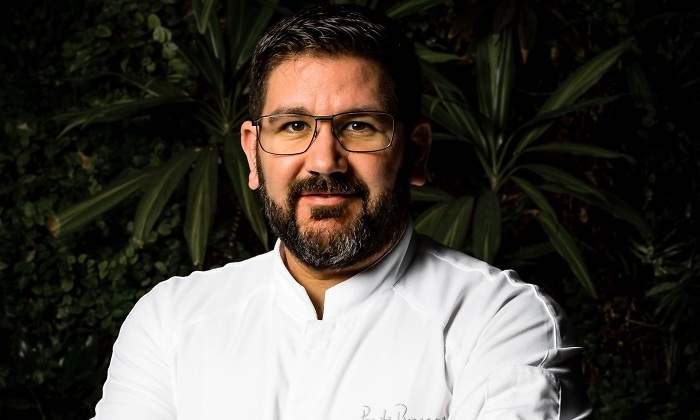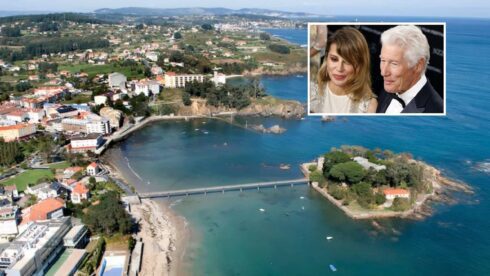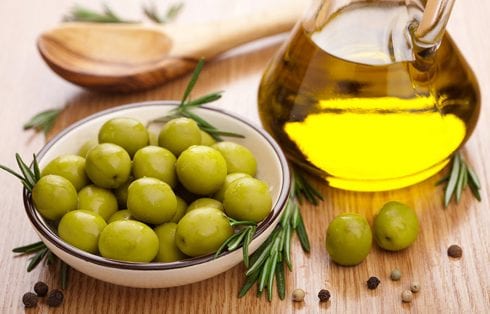
“ONCE you reach this point, you have to carefully think, what else is there? What is life without a dream ahead? Now we will chase another dream.”
These were the words of Marbella chef Dani Garcia, just 22 days after achieving almost every chef’s fantasy of winning his third Michelin Star on November 21 in Lisbon.
The news that the 42-year-old will close his restaurant in December 2019 to focus on new projects – but keep his three stars – was something that shocked and even disappointed customers and admirers.
Although Garcia is possibly the quickest to throw in the towel at the peak of his culinary career, he is not the first.
Before him famous Spanish chefs such as Sergi Arola, Carme Ruscalleda and Ferran Adria closed their eateries citing the immense pressure of maintaining the accolade, economical factors and new ambitions as their motives.

Michelin starred-restaurants may be prestigious but it is well-known that they are not financially sustainable.
Most decorated chefs make their money from books, TV shows and guest appearances rather than through the business, which has to fork out wages for an army of chefs, kitchen porters and waiters, who work with astronomically expensive ingredients and equipment.
Staff wages are believed to reach 50% of a Michelin-starred restaurant’s expenses, despite salaries being notoriously low for 16-hour working days.
Catalunyan chef Sergi Arola was forced to close his eponymous two-starred restaurant in 2015, leaving a debt of €7 million, while Carme Ruscalleda – the only woman in the world with seven Michelin Stars – closed her three-starred Barcelona eatery, Sant Pau, last October in a bid to pursue pastures new.
What is the Michelin Guide?
1889: Brothers Andre and Edouard Michelin found the Michelin tyre company in France.
1900: First edition of the Michelin Guide is published covering France. The ‘road atlas’ contained maps, tips on how to change tyres, where to find lodging, and above all, lists of petrol stations with quality cafes to stop at while waiting for a car to be repaired. By showcasing all the places to visit, the brothers hoped more people would buy a vehicle, meaning more people would buy (Michelin) tires.
As petrol station restaurants improved and started specialising in certain dishes, the guide became more refined.
1926: The guide begins to award stars for fine dining establishments, initially marking them with a single star.
1931: A hierarchy of zero, one, two and three stars is introduced.
1936: The criteria for the starred rankings are published.
2006: Michelin expands outside Europe with the launch of its New York guide, later expanding to some other major US cities and to parts of Asia.
2018: The Spain and Portugal Guide includes 11 restaurants with three stars, 31 with two and 148 restaurants have one star. The GB and Ireland Guide includes five restaurants with three stars, 20 restaurants with two stars and 150 establishments with one star.
The owner of five-time winner of the World’s Best Restaurant, Ferran Adria, closed three-starred El Bulli in 2011.
Exhausted with the business which he called ‘a monster to tame and transform’ he decided to focus on a new project, El Bulli1846, a gastronomical research centre.
Meanwhile, dad-of-two Garcia said his decision came from a ‘personal need’ to take his unique ‘vision of Andalucian gastronomy to every corner of the world’.
Whatever their reasons were for shutting up shop at the top of their A game, the age-old question still remains.

How exactly does a chef attain, and more importantly, maintain the prestigious accolade?
British-Spanish Michelin Star-trained chef, Sebastian Menendez, admits that the guide is ‘illusive’ and the criteria for achieving and keeping an award is ‘vague’.
“They don’t ever tell you why you’ve gained or lost a star – they try to be very smoke and mirrors about it all,” says the 29-year-old who worked at the former one-starred Ockenden Manor Hotel in Sussex for over a year.
“We only found out we’d maintained a star for the 14th year when the Michelin Guide arrived at the restaurant.
“We opened the book and saw it, there was no further explanation.
Chef thanked us for our hard work and we carried on.”
Eventually, Sebastian decided to leave the Michelin world for more sociable hours, better pay and above all, the opportunity to create his own masterpieces in other kitchens.

He went on to work as a head chef at fine dining restaurants and hotels in the UK, Bilbao and Ibiza.
His former restaurant, housed at Ockenden Manor Hotel, lost its only star in recent years and although the reasons have not been revealed, Sebastian suspects it was down to a ‘reluctance to re-invent’ its menu.
The Mancunian cook, now based in the Channel Islands, says he is ‘not surprised’ at Garcia’s move and believes creativity and change are key to staying at the top of the culinary world.
“Maintaining three stars is a lot harder than getting them, you have to be constantly creating mind-boggling recipes because the whole world is looking at you.
“The third star is the highest you’re ever going to get.

After achieving it you can understand that many want to slow down and be with the family again instead of spending 16 hours a day in a high-pressured kitchen.
It’s really tough physically and mentally,” adds Sebastian.
Although Michelin has always kept the details of its rigorous approach under wraps, the guide does outline five criteria that must be met – quality of the products, mastery of flavour and cooking techniques, the personality of the chef in his cuisine, value for money, and consistency between visits.
The Michelin inspectors – made up of ‘passionate’ catering and hospitality experts – dine out anonymously and pay for their meals to ensure they do not receive any special treatment.
After dining at a restaurant a number of times, the inspectors decide if it is deserving of an award, with one star for ‘very good cooking in its category’, two stars for ‘excellent cooking, worth a detour’, or the maximum three stars for ‘exceptional cuisine, worthy of a special journey’.
Below chef Sebastian helps break down what the all-important criteria entails.
1. Quality of the products
“First and foremost the products have to be of the best quality, but they also have to be in season and artisan. That’s crucial,” adds the chef.
“For example, we used around 40 different types of tomatoes – yellow, purple, orange, red, yellow with black spots – I didn’t even know that many existed until I went to a Michelin starred-kitchen. You have to adapt dishes to the season.”
Sebastian notes that many haute cuisine kitchens also work with a lot of ‘live’ products and prepare everything from scratch.
“You’ll find everything from bresaola moulding in the basement, to home-smoked salmon, and freshly made bread rising in the oven. It’s a scientific step-by-step process for most of the dishes,” he adds.
2. Mastery of flavour and cooking techniques
Investing in the best kitchen equipment on the market is not only a luxury, it is a necessity, it would seem, in the Michelin world. But it comes at an expensive price.
“When we refurbished the kitchen, it cost around £180,000 [€200,000] for equipment. That isn’t even including the fridges, or labour costs etc,” adds Sebastian.
Top pieces of kit include a ‘sous-vide’ water bath – a process in which food is vacuum-sealed in a plastic pouch and placed in a hot water bath, which locks in nutritional value, keeps meat succulent and eliminates contamination risks.
Meanwhile, a ‘dehydrator’ can turn a piece of raw, wet beetroot into a dry crisp, or a ‘rational’ fan oven heats up to 300 degrees and includes a built-in temperature probe which can be set at a desired temperature to cook meat and hot hold it.
One of Sebastian’s favourites is a ‘thermo mixer’, costing around £3,000, which he describes as similar to a blender but ‘spins twice as fast’ to make puree sauces ‘ultra smooth’.
“In order to create dishes you won’t find at home – like emulsions – you need to use this specialised equipment.”
3. Personality of the chef in his cuisine
This step is essentially the head chef putting his spin on dishes that already work, sums up Sebastian.
“We all know things like cheese and onion go together, or beef and horseradish, but it’s taking those flavours and creating something totally different,” he says, before adding that he believes the guide should have a sixth step for creativity.
“Your food could have personality but that doesn’t mean it’s creative. Dishes with personality that have been done 1,000 times before aren’t creative anymore.”
4. Value for money
“For me this point is a bit irrelevant when you’re talking about three-star restaurants because you’re spending hundreds before you’ve even paid for a wine pairing. It’s always going to be expensive,” adds the Manuncian chef.
Although most Michelin starred-restaurants offer menus that will not suit the majority of diners’ budgets, experts have said this category is more about whether the ‘experience’ was worth the price.
5. Consistency between visits
In order to get an idea of how a restaurant truly operates, Michelin inspectors will usually visit the restaurant twice in the same week – on a busy day and a quiet one – to observe whether the different teams work to the same standard.
“They try to catch you out. It’s completely different coming on a busy weekend when the A team is fully prepped, to a quiet Monday night when you might have your B team on,” insists the chef.
“The standard cannot slip, not even for one service.”
But how do you maintain such a high standard every day?
By weighing every single ingredient by the gram and cutting every slice to the exact same millimetre as the last, says Sebastian.
“You have to achieve perfect consistency every time. It has to look exactly the same and taste exactly the same every time, no matter who has made it. You have to measure absolutely everything.
“No step can be skipped. That is true consistency and it’s incredibly important.”








